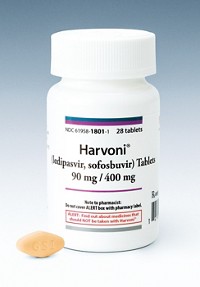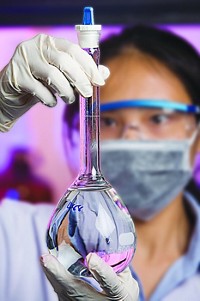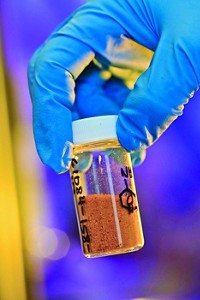Advertisement
Grab your lab coat. Let's get started
Welcome!
Welcome!
Create an account below to get 6 C&EN articles per month, receive newsletters and more - all free.
It seems this is your first time logging in online. Please enter the following information to continue.
As an ACS member you automatically get access to this site. All we need is few more details to create your reading experience.
Not you? Sign in with a different account.
Not you? Sign in with a different account.
ERROR 1
ERROR 1
ERROR 2
ERROR 2
ERROR 2
ERROR 2
ERROR 2
Password and Confirm password must match.
If you have an ACS member number, please enter it here so we can link this account to your membership. (optional)
ERROR 2
ACS values your privacy. By submitting your information, you are gaining access to C&EN and subscribing to our weekly newsletter. We use the information you provide to make your reading experience better, and we will never sell your data to third party members.
Business
Biotech Earnings Boomed In 2014
Biotech drug firms saw substantial growth as their big pharma competitors struggled
by Lisa M. Jarvis
March 9, 2015
| A version of this story appeared in
Volume 93, Issue 10

Despite a return to research productivity marked last year by a surge in new drug approvals, major pharmaceutical companies struggled to grow in 2014. New additions to their product portfolios were not enough to overcome pricing and competitive pressures for older drugs.
Both average sales and earnings for the 11 major pharmaceutical firms tracked by C&EN declined last year. Results for the fourth quarter were particularly weak, with only two big pharma companies—AbbVie and Sanofi—reporting an increase in sales. Overall, sales for the big pharma companies that C&EN tracks were down 2.8% in the fourth quarter; earnings dipped 4.3%.
Big pharma firms were outshone by their biotech brethren, several of which grew by leaps and bounds after highly successful new product launches. The clear standout was Gilead Sciences, a Foster City, Calif.-based firm with a portfolio of treatments for HIV and hepatitis C virus (HCV).
Gilead’s earnings in 2014 nearly tripled to $13.3 billion on sales that more than doubled to $24.9 billion. Among the major pharma companies, only Johnson & Johnson and Pfizer had annual profits exceeding those of Gilead—and both of them are far larger.
Gilead’s whopping 53% profit margin for the year has put it at the center of a fierce debate about the high cost of drugs. The company’s stunning growth is almost entirely due to its expensive HCV treatments: Sovaldi, a polymerase inhibitor, costs $84,000 for 12 weeks of treatment, and Harvoni, a pill that combines Sovaldi with an NS5A inhibitor, is $94,500 for a 12-week regimen.
The Food & Drug Administration approved Harvoni at the end of the third quarter of 2014, and in the following quarter the drug racked up $2.1 billion in sales. Sovaldi, meanwhile, brought in another $1.7 billion in the quarter. For the year, the company’s HCV franchise hit $12.4 billion in sales.
In the last weeks of 2014, AbbVie gained FDA approval for its own combination HCV therapy, Viekira Pak. In less than two weeks on the market, Viekira Pak logged $48 million in sales.
The competition led Gilead and AbbVie to divvy up chunks of the market through agreements with several pharmacy benefits management firms. Those firms brokered major discounts off the prices of Viekira Pak—which has a list price of about $83,300 for 12 weeks of treatment—and Harvoni, which means Gilead’s growth will level off this year.
Biogen Idec’s performance was also good. The company’s sales increased 40% to $9.7 billion, and earnings improved 54% to $3.3 billion. Fourth-quarter earnings were even better, surging 73%.
Last year’s robust performance was driven by the takeoff of a new treatment for multiple sclerosis. Annual sales of Tecfidera, a small-molecule MS drug approved in the U.S. in 2013 and in Europe last year, more than doubled to $2.9 billion. Meanwhile, the rest of Biogen’s MS portfolio offered solid sales: Tysabri revenues were up 28% to $2.0 billion, and the firm’s interferon drugs, which include both Avonex and a newly approved long-acting interferon, Plegridy, brought in $3.1 billion.
Biogen caused a hubbub late last year when it announced encouraging early data on an Alzheimer’s treatment. BIIB037 is an antibody that binds to aggregate forms of amyloid-β, which makes up the telltale plaque coating the brains of people with Alzheimer’s. Most of the previously tested antiamyloid antibodies bind to the monomer form of the peptide.

Preliminary data from a Phase Ib study showed that BIIB037 lowered amyloid-β levels in the brain. In a move that took industry watchers by surprise, Biogen decided those results were good enough to move the drug candidate directly into Phase III studies.
Although the graveyard of failed Alzheimer’s drug candidates is crowded, industry watchers were encouraged by the smart design of Biogen’s study and early results. And despite cautiousness about any Alzheimer’s drug winning approval, analysts say BIIB037 could bring in $3 billion in annual sales if it does reach the market.
The contrast between the big biotechs and big pharma was stark last year. Although many pharma companies shook off their productivity lulls, sales of
Out of the bunch, Eli Lilly & Co. had one of the toughest years. The Indianapolis-based firm lost patent protection in December 2013 on its depression treatment Cymbalta, which saw 2014 sales plummet 68%. Meanwhile, the osteoporosis treatment Evista loss patent exclusivity in March 2014, leading to a 60% drop in sales.
Overall, Lilly’s earnings in 2014 dropped 34% to $3.0 billion, based on a 15% sales decline to $19.6 billion.
Despite the ongoing erosion of sales and earnings, Lilly did have some bright points in the year. A nearly five-year new drug drought, broken only by the approval of a poorly received Alzheimer’s diagnostic, ended for Lilly with the approval of three new products in 2014: the cancer drug Cyramza and the type 2 diabetes treatments Trulicity and Jardiance.
The three drugs won’t be enough to offset Lilly’s patent losses. Cyramza, approved in April, has the best near-term prospects. Although it posted just $75 million in sales in 2014, it should gain traction this year as FDA allows it to be used in more kinds of cancer. Leerink stock analyst Seamus Fernandez forecasts it to cross the $1 billion sales mark in 2018.
GlaxoSmithKline rivaled Lilly for the bottom-performing slot in 2014. The British firm saw sales fall 13% to $35.7 billion. Earnings were down 12% to $7.5 billion.
The shrinkage is largely a result of trouble in GSK’s large respiratory franchise, which saw sales fall 15% in 2014 to $9.6 billion. In addition to a steep drop in sales of its older asthma treatment Advair, which is facing stiff competition in the U.S. and Europe, sales of two newer respiratory products, Breo and Anoro, did not take off as expected. GSK expects the franchise to return to growth in 2016.
Last fall, the company embarked on an overhaul of its R&D operations with the goal of saving $1.6 billion. The company said it would move much of its research activity to Stevenage, England, and Philadelphia and cut about 900 jobs in Research Triangle Park, N.C., this year.
On the business front, GSK recently completed the sale of its oncology products business to Novartis for $16 billion. For the next 12.5 years Novartis will be able to commercialize products in GSK’s oncology pipeline. At the same time, GSK bought Novartis’s vaccines business, excluding its flu vaccines, a move that will make it the leader in the global vaccines market. Lastly, Novartis and GSK are creating a joint venture to house their over-the-counter drug businesses.
The complex deal, which took nearly a year to complete, “changes the shape of the business,” GSK Chief Executive Officer Andrew Witty told analysts when announcing fourth-quarter results. “It is really important to remember that this deal brings with it substantial financial benefits over the short, medium, and long run.”





Join the conversation
Contact the reporter
Submit a Letter to the Editor for publication
Engage with us on Twitter